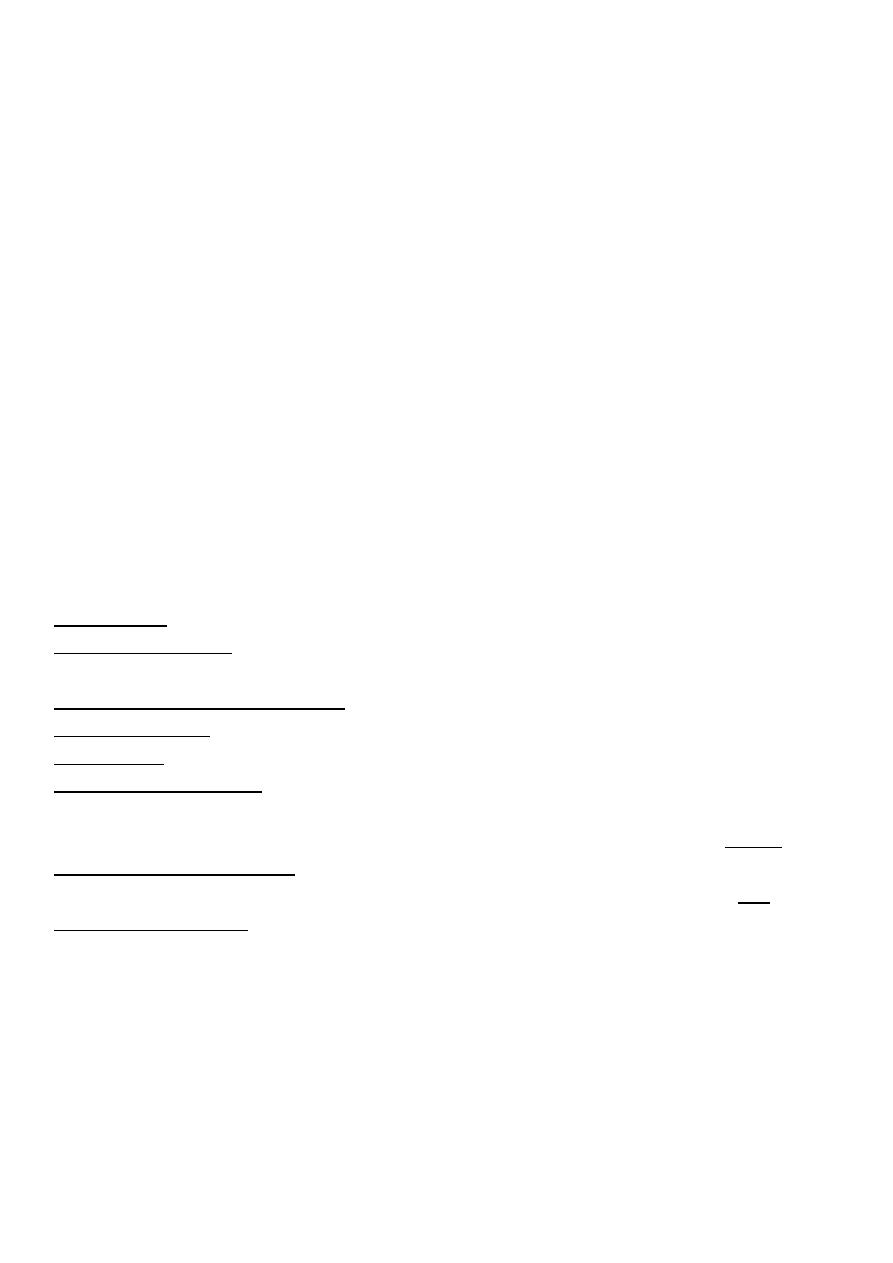
1
Fifth stage
Pediatric
Lec-4
.د
رواء
1/1/2014
Behavioral disorders
&Habit disorders
Objectives
1.To know the types of behavioral disorders
2.To know about the types of habit disorders
3.How we can diagnose these disorders
4.What are the methods of treatment
Types of behavioral disorders
1.Enuresis
2.Encopresis
3.Pica
4. Rumination
Enuresis (Bed wetting )
Enuresis :
is defined as the repeated voiding of urine into clothes or bed at least twice a week for
at least 3 consecutive months in a child who is at least 5 yr of age.
Primary enuresis occurs in children who have never been consistently dry through the
night, secondary enuresis refers to the resumption of wetting after at least 6 months
of dryness.
The physiology of voiding
• Urine storage consists of sympathetic and pudendal nerve–mediated inhibition of
detrusor contractile activity accompanied by closure of the bladder neck and
proximal urethra with increased activity of the external sphincter .
• Over time, bladder capacity increases. In children up to the age of 14 yr, the mean
bladder capacity in ounces is equal to the age (in years) plus 2.

2
Toilet training
• At 2-4 yr, the child is developmentally ready to begin toilet training. &To achieve
conscious bladder control, several conditions must be present:
• 1.awareness of bladder filling,
• 2.cortical inhibition (suprapontine modulation) of reflex (unstable) bladder
contractions
• 3.ability to consciously tighten the external sphincter to prevent incontinence
• 4.normal bladder growth
• 5.motivation by the child to stay dry
• Girls typically acquire bladder control before boys, and bowel control typically is
achieved before bladder control.
Epidemiology
• At age 5 yr, 7% of boys and 3% of girls have enuresis; by age 10 yr the percentages
are 3% and 2%, respectively: by age 18 yr, 1% for men and less than 1% for women.
Primary enuresis accounts for 85% of cases.
• Enuresis is more common in lower socioeconomic groups, in larger families, and in
institutionalized children
Etiology
• incidence of enuresis in children from nonenuretic families is 15%
• 44% and 77% of children were enuretic when one or both parents, respectively, were
themselves enuretic
• Children with nocturnal enuresis might :
• 1-hyposecrete arginine vasopressin (AVP)
• 2-less responsive to the lower urine osmolality associated with fluid loading
• 3-small functional bladder capacity
• 4-There is some support for a relationship among sleep architecture and abnormal
bladder function
• 5-central nervous system immaturity with delays in motor and language milestones
• 6-Psychosocial stressors may be contributory (e.g., divorce, school trauma, physical
or sexual abuse, hospitalization).

3
Differential Diagnosis
include urinary tract infections (UTIs), chronic kidney disease, hypercalcemia, hypokalemia,
chemical urethritis, constipation, diabetes mellitus or insipidus, sickle cell anemia, seizures,
pinworm infection, spinal dysraphism, neurogenic bladder, hyperthyroidism, sleep-
disordered breathing, drugs (selective serotonin reuptake inhibitor, valproic acid, clozapine)
Diagnosis
• By doing investigations including :
• 1-general urine examination & urine culture and specific gravity of urine
• 2-Fasting blood sugar
• 3-ultrasonography or uroflowmetry are indicated in patients with both nocturnal &
diurnal enuresis to exclude congenital malformations
• 4-Invasive imaging studies are indicated rarely in anatomical malformations
TREATMENT REGIMEN FOR NOCTURNAL ENURESIS
• Limit fluids to 8 oz at supper 3 to 3.5 hours before bedtime; no fluids thereafter.
• Empty the bladder before sleeping.
• Make a bedtime “resolution” to stay dry.
• Discuss mode of action of drugs or moisture alarm and drug side effects;
• Keep a calendar of dry and wet nights.
• Encourage the child's participation in cleaning up personal clothing and bedclothes.
• Continue use of alarm until 28 consecutive dry nights are achieved, then stop; use
medications as directed..
• If bedwetting returns on tapering or discontinuation of medication or alarm, restart
nightly medication or alarm.
• If the child is not dry every night, despite motivation and efforts, substitute or add
another drug or alarm and rule out undisclosed diurnal voiding problems.
Nocturnal enuresis alarm
urine alarm treatment is recommended Application of an alarm for a period of 8-12 wk can
be expected to result in a 75-95% success in the arrest of bedwetting. The underlying
conditioning principle likely lies in the alarm's being an annoying awakening stimulus that
causes the child to awaken in time to go to the bathroom and/or retain urine in order to
avoid the aversive stimulus.

4
Pharmacotherapy
1.Desmopressin acetate
(DDAVP) is a synthetic analog of the antidiuretic hormone (ADH) vasopressin, which
decreases nighttime urine production.
Unfortunately, the relapse rate is high when DDAVP is discontinued. DDAVP is also
associated with rare side effects of hyponatremia and water intoxication, with resulting
seizures
• 2.Imipramine hydrochloride (Tofranil)
• It has anticholinergic effect on bladder, it increases resistance of bladder outlet with,
possible central inhibition of micturition reflex, and possible effect on sleep arousal
by central noradrenergic facilitation .
• The dose is 1.5-2 mg/kg 2 hr before bedtime, not to exceed 2.5 mg/kg or 75 mg
maximum
• The side effect : Can cause sleep disturbance, mood alteration, decreased
appetite,and risk of cardiac arrhythmia with overdose
• oxybutynin and tolterodine are antimuscarinic drugs, which may be effective by
reducing bladder spasm and increasing bladder capacity.
Encopresis
• Encopresis : is the regular, voluntary or involuntary passage of feces into a place
other than the toilet after 4 years of age.
• Soiling is the involuntary passage of stool and often is associated with fecal
impaction. The normal frequency of bowel movements declines between birth and 4
years of age, beginning with greater than four stools per day to approximately one
per day.
Etiology of encopresis
• 1.low-fiber diet
• 2.slow gastrointestinal transit time for neurologic or genetic reasons
• 3.withholding of bowel movements because of pain, discomfort, or psychological
distress .

5
Clinical Manifestations
• 1.uncontrolled defecation in the underwear
• 2.Parents often report that the child has diarrhea because of soiling of liquid stool.
Soiling may be frequent or continuous.
• 3.the child is passing large-caliber bowel movements that occasionally may block the
toilet.
• 4.painful defecation, impaction, and withholding.
• 5.stool particles can be felt on abdominal examination in about 50% of patients .
• 6.A rectal examination allows assessment of sphincter tone and size of the rectal
vault. Evaluation of anal placement and existence of anal fissures also is helpful in
considering etiology and severity.
• 7.Neurological examination to exclude any spinal cord abnormality
Differential diagnosis
• 1.Hirschsprung disease
• 2. Spinal cord abnormalities such as spinal cord tumor and tethered cord
• 3. Hypothyroidism
• 4.Anal stenosis
• 5.Drugs such as opiates ,phenothiazins and anti depressants
Treatment
• Treatment involves a combination of :
• 1. behavioral training
• 2.laxative therapy.
• Successful treatment requires 6 to 24 months.
• Laxative therapy by adequate colonic clean out or disimpaction. Clean-out methods
include enemas alone or combinations of enema (phosphate Glycerin ) , suppository
(Glycerin,Bisacodyl ) and oral laxatives (milk ofmagnesia,lactulose,mineral oil )
• Behavioral training : Routine toilet sitting is instituted for 5 to 10 minutes three to
four times per day.

6
• The child is asked to demonstrate proper toilet sitting position with the upper body
flexed forward slightly and feet on the floor or foot support. The child should be
praised for all components of cooperation with this program, and punishment and
embarrassment should be avoided.
Pica
• Pica involves the persistent eating of nonnutritive substances (e.g., plaster, charcoal,
clay, wool, ashes, paint, earth).
• The eating behavior is inappropriate to the developmental level (e.g., the normal
mouthing and tasting of objects in infants and toddlers) and not part of a culturally
sanctioned practice.
Epidemiology
• Pica appears to be more common in
• children with mental retardation
• pervasive developmental disorders
• obsessive-compulsive disorders,
• neuropsychiatric disorders (e.g. schizophrenia)
• It usually remits in childhood but can continue into adolescence and adulthood.
Etiology
• 1.nutritional deficiencies (e.g., iron, zinc, and calcium)
• 2.low socioeconomic factors (e.g., lead paint),
• 3.child abuse and neglect
• 4.family disorganization (e.g., poor supervision)
Treatment
• 1.The sequelae related to the ingested item can require specific treatment (e.g., lead
toxicity, iron-deficiency anemia, parasitic infestation).
• 2. Ingestion of hair can require medical or surgical intervention for a gastric bezoars
• 3. Nutritional education

7
• 4.psychologic assessment, and behavior interventions are important in developing an
intervention strategy for this disorder.
Rumination Disorder
• Rumination disorder is defined as the repeated regurgitation and rechewing of food
for a period of at least 1 mo following a period of normal functioning,
malnourishment with resultant weight loss or growth delay is a hallmark of this
disorder.
• The rumination is not due to an associated gastrointestinal illness or other general
medical condition (e.g., esophageal reflux),and It does not occur exclusively during
the course of anorexia nervosa or bulimia nervosa.
Epidemiology
• Rumination is a rare disorder that is potentially fatal, and some reports indicate that
5-10% of affected children die. In otherwise healthy children, this disorder typically
appears in the 1st yr of life, generally between the ages of 3 and 6 mo. The disorder is
more common in infants with severe mental retardation than in those with mild or
moderate mental retardation.
Etiology
• 1.a disturbed relationship with primary caregivers
• 2.lack of an appropriately stimulating environment;
• 3.distraction from negative emotions, and/or inadvertent reinforcement (attention)
from primary caregivers.
Differential Diagnosis
Include :congenital gastrointestinal system anomalies, pyloric stenosis, Sandifer's syndrome
(spasmodic torsional dystonia with arching of the back and rigid opisthotonic posturing,
mainly involving the neck, back, and upper extremities, associated with
symptomatic gastroesophageal reflux, esophagitis, or the presence of hiatal hernia ),
increased intracranial pressure, diencephalic tumors, adrenal insufficiency, and inborn
errors of metabolism.

8
Treatment
• Treatment is generally directed at reinforcing correct eating behavior and minimizing
attention to rumination.
• Aversive conditioning techniques (e.g., withdrawal of positive attention) are useful
when a child's health is jeopardized.
• Successful treatment requires the child's primary caregivers to be involved in the
intervention. The caretakers need counseling around responding adaptively to the
child's behavior as well as altering any maladaptive responses. There is no current
evidence supporting a psychopharmacologic response to these disorders.
Habit disorders
• Habit disorders: are repetitive, seemingly driven, and nonfunctional motor behavior
that markedly interferes with normal activities or results in self-inflicted bodily injury
that requires medical treatment.
• The behavior persists for 4 wk or longer and is not better accounted for by a
compulsion, a tic, a stereotypy like hair pulling (as in trichotillomania).
Types of habit disorders
• Bruxism (teeth grinding ) is common, can begin in the first 5 yr of life, and may be
associated with daytime anxiety.
• Untreated bruxism can cause problems with dental occlusion. Helping the child
finding ways to reduce anxiety might relieve the problem; bedtime can be made
more relaxing by reading or talking with the child and allowing the child to discuss
fears. Praise and other emotional support are useful. Persistent bruxism requires
referral to a dentist and can manifest as muscular or(temporomandibular joint pain.)
• Thumb sucking is normal in infancy and toddlerhood. Like other rhythmic patterns of
behavior, thumb sucking is self-soothing.
• Basic behavioral management, including encouraging parents to ignore thumb
sucking and instead focus on providing the child with praise for substitute behaviors,
is often .effective treatment of choice .
• Trichotillomania is the repetitive pulling of hair resulting in loss and strand breakage
of hair The usual age of onset of trichotillomania is around 13 yr, although
preschoolers have been described with this disorder. Children with trichotillomania
have an increasing sense of tension immediately before pulling or when resisting the
behavior, followed by pleasure or relief when pulling out the hair. The prevalence of

9
trichotillomania in children is not well known but is believed to be 1-2% in college
students
• Although trichotillomania often remits spontaneously, treatment of those whose
disorder has been present for >6 mo is unlikely to remit and requires behavioral
treatment. Selective serotonin reuptake inhibitors (SSRIs) such as fluoxetine .
Epidemiology
• Thumb sucking is common in infancy and in as many as 25% of children age 2 yr and
15% in children age 5 yr.
• Nail biting has a reported child prevalence as high as 45-60%.
• Bruxism (teeth grinding ) has been observed in 5-30% of children
• breath-holding spells in up to 4-5% of children Self-injurious habits, such as self-biting
or head banging, can occur in up to 25% of normally developing toddlers younger
than 8 yr.
Treatment
• for the parents to ignore the behavior and not convey worry to their children.
• Generally these behaviors disappear with time and elimination of
• attention.
• If there is distress in the child or family ,or social isolation, and/or physical injury is
occurring, then treatment is indicated.
• Behavior therapy is the mainstay of treatment using a variety of strategies including
habit reversal, relaxation training, self-monitoring, reinforcement, competing
responses, negative practice, and, rarely, the use of aversive-tasting substances (for
thumb sucking or nail biting).
• SSRIs (fluoxetine )are helpful in reducing repetitive behaviors
